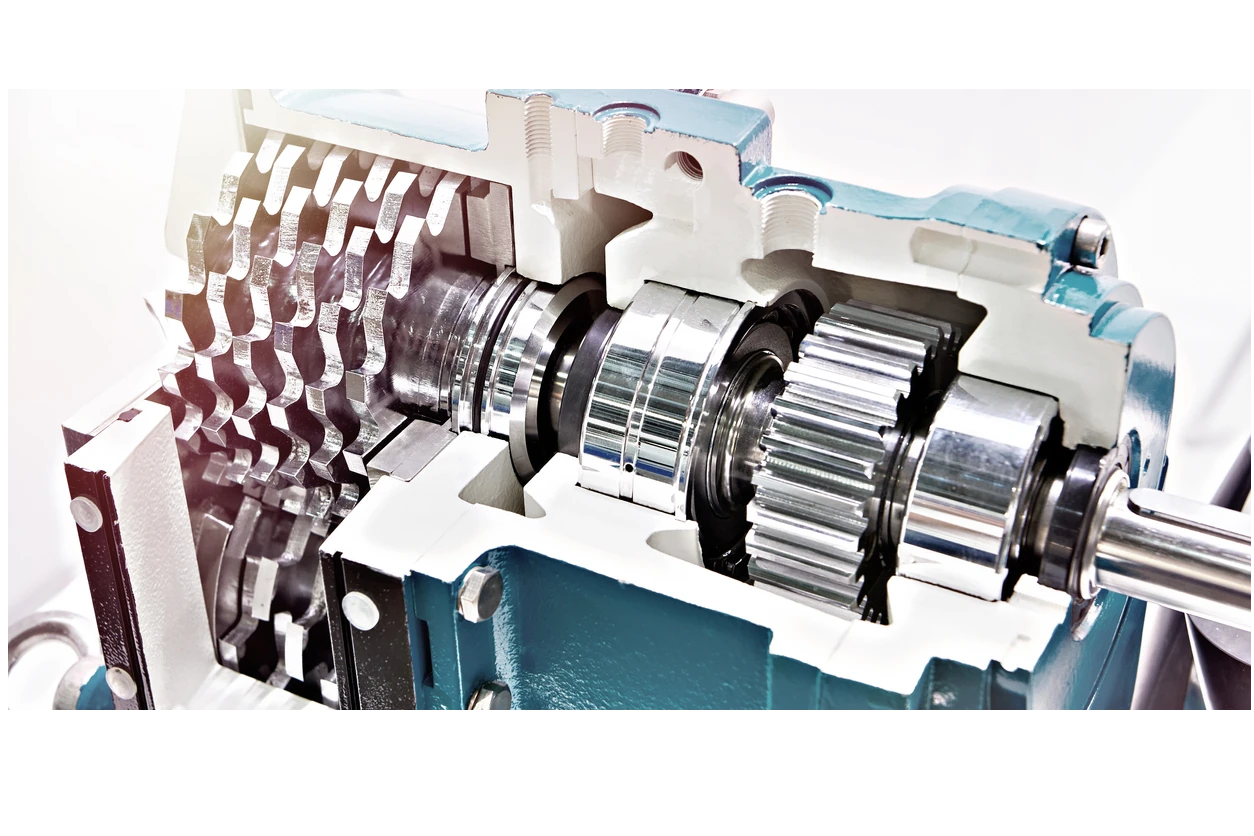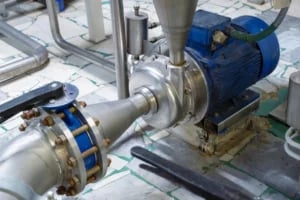Share this

Types of Positive Displacement Pumps and Their Applications
by Manasi Lakatos on May 1, 2023 8:25:43 AM
Fluid enters. Flows. Fluid leaves.
Functionally, that’s all that a pump is.
However, with complex and unique design features, the pump variations available are countless. One of the most widely known is positive displacement pumps.
What is a Positive Displacement Pump?
A positive displacement pump takes a specific amount of fluid and pushes it to its outlet.
How do positive displacement pumps move fluid?
A cavity in the pump expands and contracts to cause displacement, which pushes the fluid from the inlet to the outlet.
Pump designs vary, but most pumps can be divided into two categories: reciprocating and rotary.
Reciprocating Pumps
Reciprocating pumps move fluids through displacement by using a back-and-forth motion.
There are three common types of reciprocating pumps:
- Piston pumps
- Plunger pumps
- Diaphragm pumps
Piston and plunger pumps are functionally the same with slight design differences. These pumps will typically have a piston or plunger inside that shifts back and forth in a larger cylinder. This movement creates a vacuum-like suction on one side of the pump that pulls fluid in. When the piston or plunger moves to the other side, fluid is compressed and pushed through the outlet.
On the other hand, diaphragm pumps use a flexible membrane to draw fluid into a pumping chamber, and push it out.
Rotary Pumps
Unlike the back-and-forth motion in reciprocating pumps, rotary pumps use rotating mechanisms, such as gears to pump and transfer fluid. These pumps create a vacuum-like suction to draw in the fluid, carry it within the teeth of the gear, and transfer it to the outlet.
Although the basic functionality remains the same, the three types of rotary pumps vary in design:
- Gear pumps use two or more gears that drive each other within a pumping chamber to create pockets of pumped fluid.
- Vane pumps move its vanes in and out of a rotor to create spaces that move fluid out of the pump.
- Lobe pumps use multiple rounding lobes that create pockets of fluid volume that are moved from inlet to outlet.
While these three rotary pumps have very different designs, all positive displacement pumps have the same functionality – moving fluid from the inlet to the outlet.
Positive Displacement Pump End-Use Applications
Positive displacement pumps transfer fluids accurately and without a broad operating range. As a result, these pumps are widely used:
- Oil and gas industry
- Agriculture
- Food and beverage
Oil and Gas
As a reliable, accurate way to transfer fluids, these pumps are becoming an increasingly popular solution for efficiency. Positive displacement pumps frequently are found transferring crude oil, petroleum products, and natural gas.
Agriculture
With their ability to handle a vast range of fluids and operating conditions, positive displacement pumps are the perfect fit for agriculture. These pumps are most commonly used in irrigation systems, but also transfer chemicals and work in water supply systems.
Food and Beverage
For the food and beverage industry, control is the main focus. Positive displacement pumps transfer fluid at a controlled, measurable rate while maintaining sanitary conditions.
Rotary lobe pumps and diaphragm pumps are two of the most frequently used pumps in the industry. Rotary lobe pumps transfer fluids such as dairy, fruit juices, and sauces. Diaphragm pumps are used for things such as processing ingredients.
Limitations of Positive Displacement Pumps
While positive displacement pumps have their advantages, they do have their limitations:
- Less efficient than centrifugal pumps
- Handling low viscosity
- Maintenance
1. Less Efficient Than Centrifugal Pumps
As a positive displacement pump uses mechanical energy to push each volume of fluid against a system restriction, it generally uses more energy to move a given volume of fluid than a centrifugal pump, which has much less internal mechanical resistance.
The conditions of service may determine that a centrifugal pump is better suited to a certain application.
2. Handling Low Viscosity
Since positive displacement pumps are designed for moving highly viscous fluids, working with low-viscosity fluids can result in slippage and leaks.
Slippage occurs when the fluid pumped leaks back into the clearance of the pump, instead of the outlet. Most positive displacement pumps also count on the fluid to provide a fluid film that prevents contact of the meshing surfaces and supports journal bearings. As a result, the pumping process decreases efficiency and increases wear and tear on the pump.
Although positive displacement pumps can pump these fluids, to avoid slippage centrifugal pumps are the preferred alternative.
Positive Displacement Pumps vs. Centrifugal PumpsCentrifugal pumps move fluid by using impellers to transfer rotational energy. Fluid enters the pump and lands on the impeller axis, then centrifugal force pushes the fluid through the impeller’s vane tips and towards the pump outlet. While both centrifugal and positive displacement pumps work to pump fluids, there’s one major difference – the viscosity. Centrifugal pumps are most efficient when pumping low-viscosity fluids in low-pressure environments. Choosing one pump over the other heavily depends on this key difference. |
3. Maintenance
Think of a puzzle. When you have thousands of pieces, the likelihood of losing a piece while putting it together is nearly inevitable – resulting in an unfinished project.
The same concept applies to pumps.
Typically in pumps, the internal design all fits together and relies on the other parts. If one stops working, the whole pump will break down.
Spending extra time and money on maintenance is critical to ensure one part doesn’t affect the rest of the pump.
Positive Displacement Pumps: Simple, Yet Complex
While simple in function, positive displacement pumps have a complex design. Designed for pumping highly viscous fluids efficiently, positive displacement pumps have been and will continue to be a preferred method in many industries.
Which Type of Positive Displacement Pump is Best?
Choosing the right positive displacement pump is a tough decision.
Reach out to one of our technicians to simplify your decision.

